We are back with new blog posts on the Volupe technical blog, after the summer vacation break. The new release of Simcenter STAR-CCM+, version 2506, was released during the summer, and many great new features were introduced. If you missed Robin’s blog post about new features for multiphase flow, follow this link https://volupe.com/simcenter-star-ccm/simcenter-star-ccm-multiphase-news-version-2506/. In this blog post we are focusing on pre-processing with new features and improvements for CAD and mesh handling.
Mesh executions
Version 2506 really spoils us with possibilities to speed-up our meshing.
Both increased speed for the surface remesher and concurrent-parallel meshing for assemblies have been implemented.
Let’s start with speed-up for the surface remesher. Surface remeshing is performed in serial, meaning on one core. Therefore surface meshing can take a large part of the time for the total mesh procedure, especially for cases with high surface/volume ratio or complex geometries with many detailed features – and it is in these types of cases that you can expect greatest speed-up. If you have a larger cluster, to utilize your parallelization at, you will also experience the speed-up, since the slowest part of your meshing will be sped up significantly. A speed-up from ~20% can be expected for large and complex geometries, and for some cases the speed-up can be up to 40%. See the picture below for the three test cases Siemens used to benchmark the speed-up. Please note though, that the cache size of the processor can play a significant role in the execution time of surface remesher.
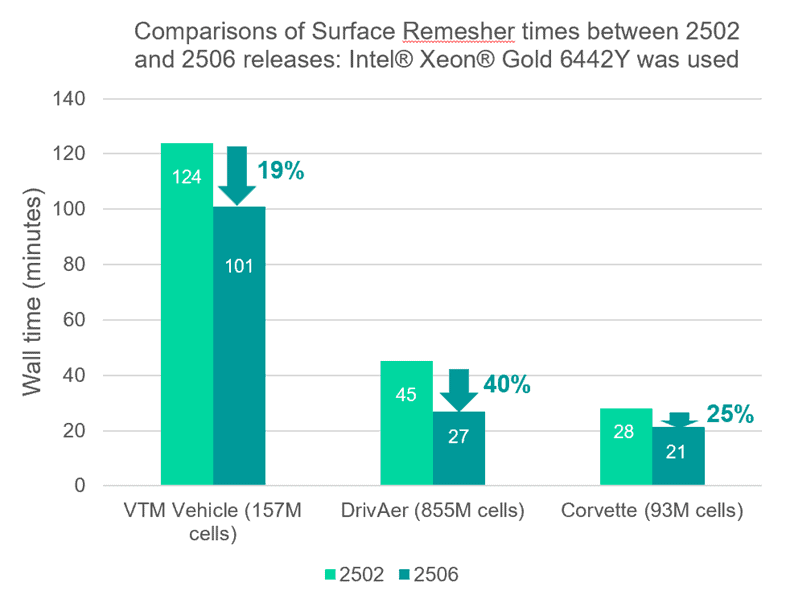
Worth mentioning is that first executing only the surface remesher (right-click on your mesh operation and execute surface mesh only), without executing the complete mesh operation, will give you a good idea of the volume mesh resolution for your geometry details – as a mesh check. For example, as the volume mesh is built from the surface mesh, it is a waste of time if to generate the volume mesh is the surface mesh quality is too low. And now this mesh check will be even faster due to this speed-up.
For the new concurrent-parallel mesh execution mode the speed-up compared to the concurrent mode (serial process, which previously was the only option for concurrent meshing) can be more than twice as fast. See picture below for two benchmark simulations. Concurrent mesh modes are mostly used for large assemblies where you want to mesh many parts in the same mesh operation. When meshing several parts in parallel you can lose scalability due to difference in complexity and size between the different parts. Small and simple parts are meshed quicker than large complex parts. With the new concurrent-parallel mesher this is optimized to assign number of cores depending on part size for the sub-processes. The resulting mesh will be identical to the mesh for concurrent meshing, so no disadvantages are expected, only speed-up due to more optimal core sub-process assigning.
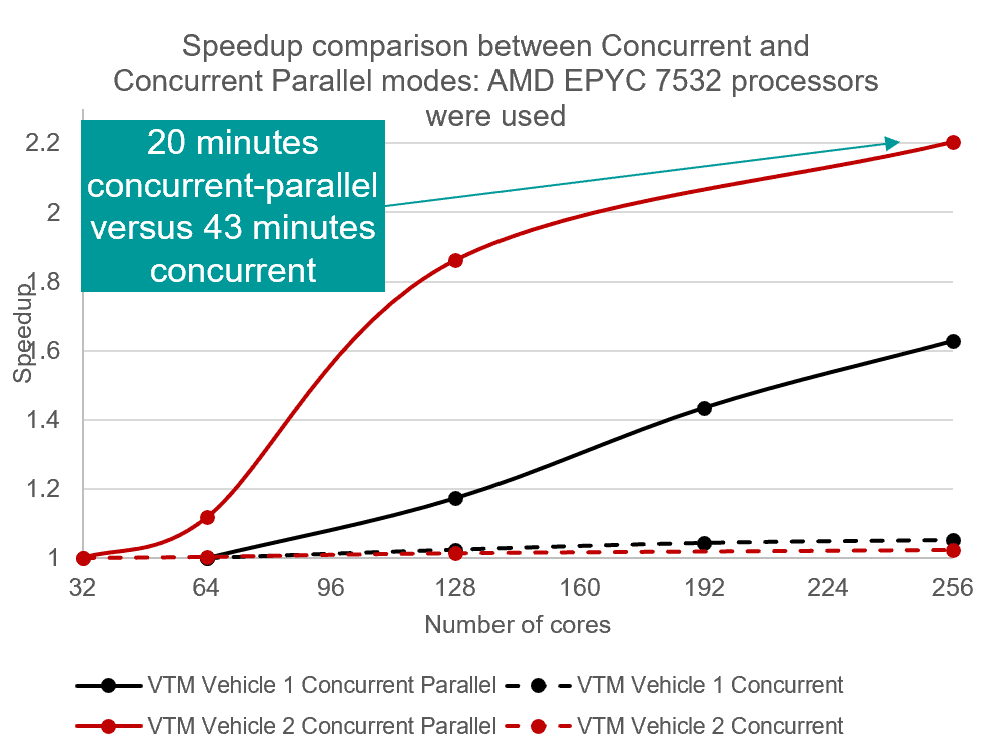
With these two improvements for meshing you have much faster meshing to look forward to, especially for simulations including complex assemblies.
New Thin mesher
The new Thin mesher is available now in version 2506. First of all though, it is worth mentioning that the new mesher is not necessarily faster (more probably, a bit slower) than the legacy Thin mesher, but will generate a mesh with higher quality. Improved cell quality where transition between thin cells and bulk mesh occurs is one improvement. Additionally, a higher percentage of cells of the global mesh being meshed using thin cells (more thin prism layers will be created as well), curve segment capability, and improved treatment of stacked thin sections – will also provide contributions to better mesh quality with higher robustness.
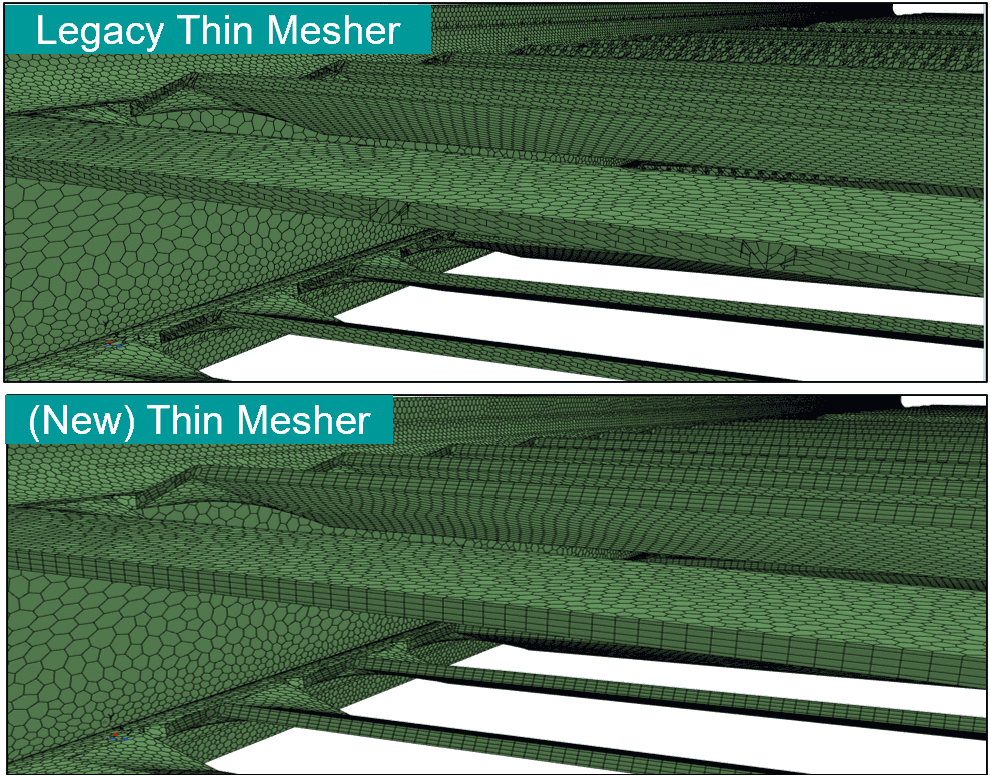
The new thin mesher requires Surface remeshing to be enabled. The general guideline is to activate the surface remesher either way, since it will provide the best foundation for the volume mesh with Simcenter STAR-CCM+ generated quality. And now with the speed-up introduced there are even less reasons for not using the built-in surface remesher (even if you of course still have the possibility to import a valid surface mesh and use it as base for your volume mesh).
In the Thin mesher expert properties you have the ability to enable the Legacy thin mesher. You will then be using the old Thin mesher, but this option will be removed in the future.
Virtual body updates
Virtual body was released in previous version (2502), see the blog post https://volupe.com/simcenter-star-ccm/new-cad-and-mesh-features-in-simcenter-star-ccm-2502/ if you did not read about the details and workflow for this feature yet. Virtual body can move boundaries without overset mesh, by activating and deactivating cells. Applications like filling up liquids in containers is one good example where this feature is suitable to use. One problem that can occur is that too thin bodies are not captured correctly, for example holes can appear. In version 2506 both accuracy in capturing thin structures and general geometries have been improved. See picture below for one example that is improved in the new version.
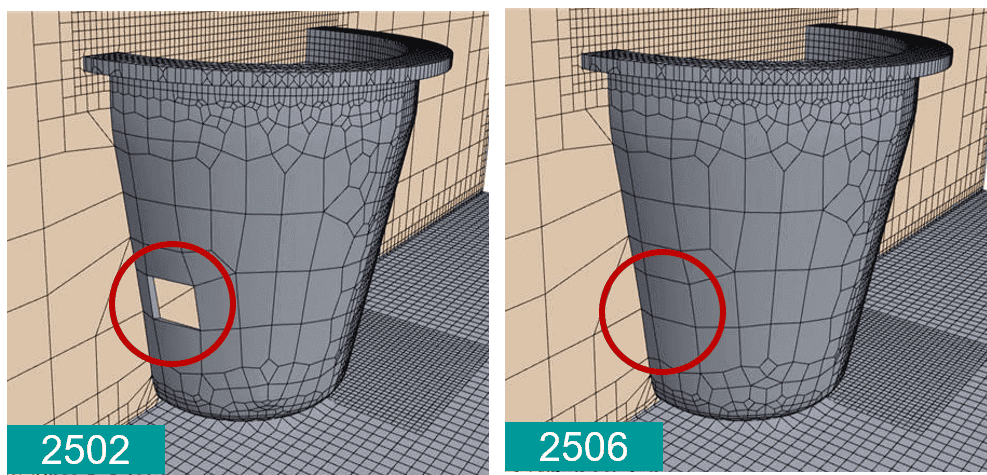
One possibility that has been added for virtual body is removing inactive cells. This is done at Solver level and can make sure that the inactive cells are not becoming active again, see picture below. When used you will get the information that Halo cells are removed. Halo cells and their faces are used internally for communicating solution information (at the partition’s boundary) in the parallel solvers as the solution advances.
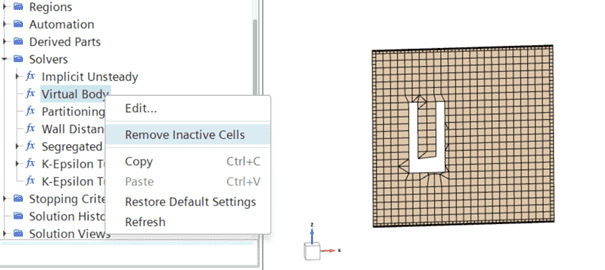
Honorable mentions
New search tool options/predicates in 3D-CAD: When using the search tool in 3D-CAD you now have the option to filter on Instances (body instance). Additionally, face/edge/vertex count can be used as condition when searching for entities with specific properties.
Metadata import from NX into 3D-CAD: When importing your parts in native NX CAD format, you can now enable importing face and edge names directly into Simcenter STAR-CCM+ 3D-CAD for faster pre-processing. Enable the tick box “Import metadata” to include this kind of information with your geometry import.
Thank you for following our technical blow, we at Volupe hope that this blog post has been interesting and that the new features in Simcenter STAR-CCM+ 2506 will be useful in your daily work. If you have any questions regarding your simulations, please feel free to reach out to us at support@volupe.com.
Author
Christoffer Johansson, M.Sc.
support@volupe.com
+46764479945
